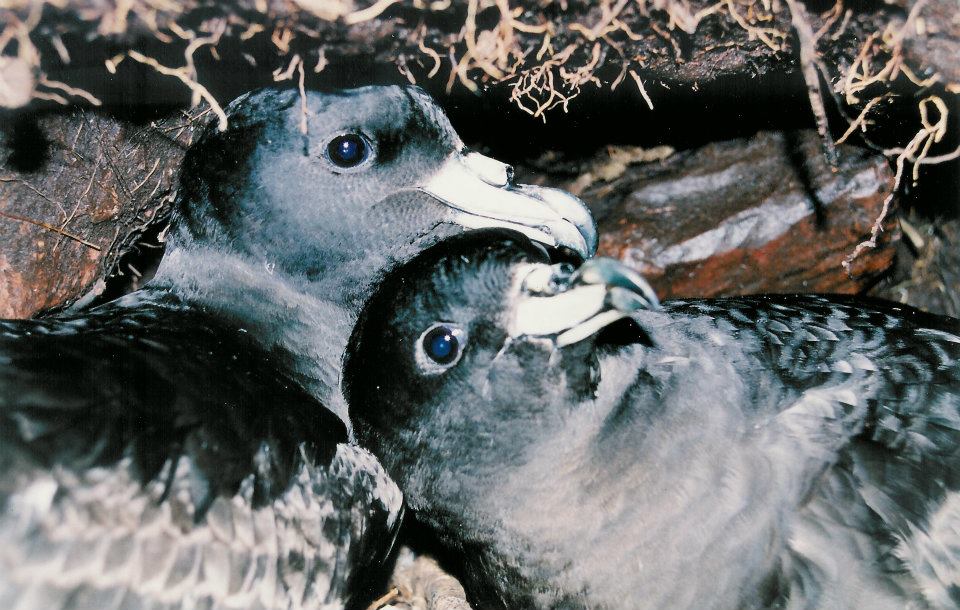
“"When three-people-are-needed-to-get-a-Black Petrel-out-of-a-burrow”, photograph from the article by Elizabeth Bell
Elizabeth Bell (Wildlife Management International Ltd, Blenheim, New Zealand has written on the Vulnerable and ACAP-listed Black Petrels Procellaria parkinsoni that breed on Aotea/Great Barrier Island in the online oublication, Pacific Seabirds. She writes “WMIL has been working at the main colony around the summit Hirakimata/Mt Hobson, monitoring 482 study burrows within the 35-ha study site each breeding season. This work can involve incredible gymnastics, putting one arm down into a burrow while trying not to slide down banks, lying over and under trees or rocks and being very tolerant of painful bites and scratches.”

A Black Petrel pair, photograph by Elizabeth Bell
“During the 2023/24 breeding season, 63.5% of the study burrows were occupied by breeding pairs, 12% occupied by non-breeding birds, and 24.5% were unoccupied during our visits (with over 50% of those unoccupied burrows showing no evidence of activity at all, i.e., blocked up, no feathers, scent of guano, etc.). Overall, 222 chicks were produced from the study burrows representing a fledgling success rate of 72.5%.”
Read more about the study in her illustrated article.
Reference:
Bell, E. 2024. Tākoketai/Black Petrels (Procellaria parkinsoni) on Aotea/Great Barrier Island, Aotearoa New Zealand. Pacific Seabirds 51(2).
07 November 2024

 English
English  Français
Français  Español
Español